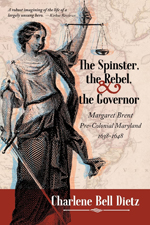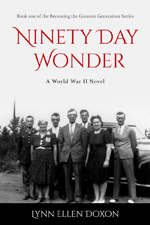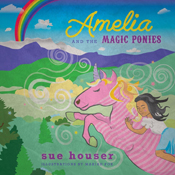Karen Meadows is a certified diabetes care and education specialist, a life coach, and a health and wellness coach who has lived with type 1 diabetes for over sixty years. In her first book, It’s a Tango, Not a War: Dancing with Type 1 Diabetes (May 2022), she “offers humor, empathy and practical recommendations for finding your own way with diabetes and living more easily, even joyfully.” You’ll find Karen on her website at KarenMeadowsDiabetes.com and on her Amazon author page. It’s a Tango, Not a War is available on Amazon and Barnes & Noble.
 Who are your ideal readers, and what do you hope they’ll take away from It’s a Tango, Not a War?
Who are your ideal readers, and what do you hope they’ll take away from It’s a Tango, Not a War?
My ideal readers are people with diabetes and those who love them. It’s a Tango tells stories, teaching ways to keep blood sugar in control, things that can go wrong, and why making diabetes your ally may serve you. Although this book will be helpful to anyone with diabetes, I concentrated on type 1 because that’s what I have.
What unique challenges did this work pose for you?
Knowing how much this information can help, I wanted to write for doctors and families and type 1s and type 2s and everyone on earth, so I was overwhelmed and couldn’t focus.
When did you know you wanted to write the book, and what was the push to start the project?
The book has long been on my mind. I attended workshops and conferences and wrote wonderful snippets that were never finished. The isolation of the pandemic gave me the opportunity to write. And a book coach and mastermind writers’ group provided structure and support.
Tell us more about how the book came together.
I wrote the book in a year. My book coach and fellow writers read chapters. I edited it myself and sent the finished text to three beta readers and two diabetes experts who read certain medical chapters. I hired artists for the book cover and to prepare the interior for publication. I figured out how to step into self-publication, gave myself a company name, copyrighted, sent a copy to the Library of Congress and purchased ISBNs. I signed up with IngramSpark and Amazon KDP at the beginning of June 2022. Once published I sent copies to those who had helped me write the book and notified everyone I knew. All that took another year. Now I have hired a marketer and am planning a virtual launch.
I have had doubts about my title and even my book cover, and considered changing them both. I don’t want people to think that living with diabetes is a dance for fun, or see my cover and think this book is about dancing. My theme is that making diabetes your ally is helpful, and life with a chronic physical condition is best lived as an adventure not a war.
Do you have a favorite quote you’d like to share from It’s a Tango, Not a War?
My last chapter asks, “Where’s Your Joy?” I suggest:
Joy is occasionally a huge gift—like a new baby or falling in love. But often joy is a grand moment in an ordinary day.
How can a person with a demanding, expensive, 24/7 life-threatening condition like type 1 diabetes be joyful? That, like every other aspect of being a human, is up to you.
Did you discover anything surprising while doing research for the book?
I was surprised to find that some people with long-term diabetes have no so-called complications. Their bodies have remained healthy and whole. I tell people that diabetes isn’t dangerous but high blood sugar is—so learn how to keep your blood sugar near normal.
What was the most rewarding aspect of putting this project together?
The beliefs I express in this book demand that I stand by them. Recently when passionately disagreeing with someone I remembered my book title. If I am not at war, I do not have to fight and instead I can enjoy relating appreciatively with someone who disagrees with me!
Knowing what you know now, what would you do differently if you started your writing/publishing career today?
I would get help early on to establish my website and start marketing my book.
What writing projects are you working on now?
In It’s a Tango, I warn readers that diabetes technology is changing so fast I would probably need to update sections of my book. However, the topic of diabetes is both comprehensive and controversial. I want to address intriguing issues in articles published in magazines or in online talks. These issues include: depression vs. diabetes distress; dealing with critical or clueless medical providers; ways friends and family can support loved ones with diabetes; how stress affects our health; and what is possible?
 KL Wagoner (writing as Cate Macabe) is the author of This New Mountain: a memoir of AJ Jackson, private investigator, repossessor, and grandmother. Kat has a speculative fiction blog at klwagoner.com and writes about memoir at ThisNewMountain.com.
KL Wagoner (writing as Cate Macabe) is the author of This New Mountain: a memoir of AJ Jackson, private investigator, repossessor, and grandmother. Kat has a speculative fiction blog at klwagoner.com and writes about memoir at ThisNewMountain.com.




 What is your elevator pitch for Futurus Rex?
What is your elevator pitch for Futurus Rex? What roles did you and Dorothy (D.C.) Fontana play in developing the story?
What roles did you and Dorothy (D.C.) Fontana play in developing the story?














































